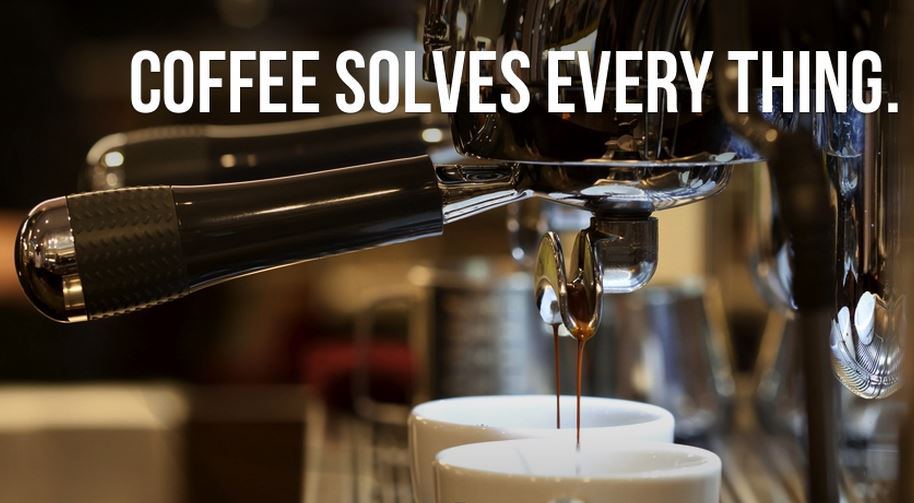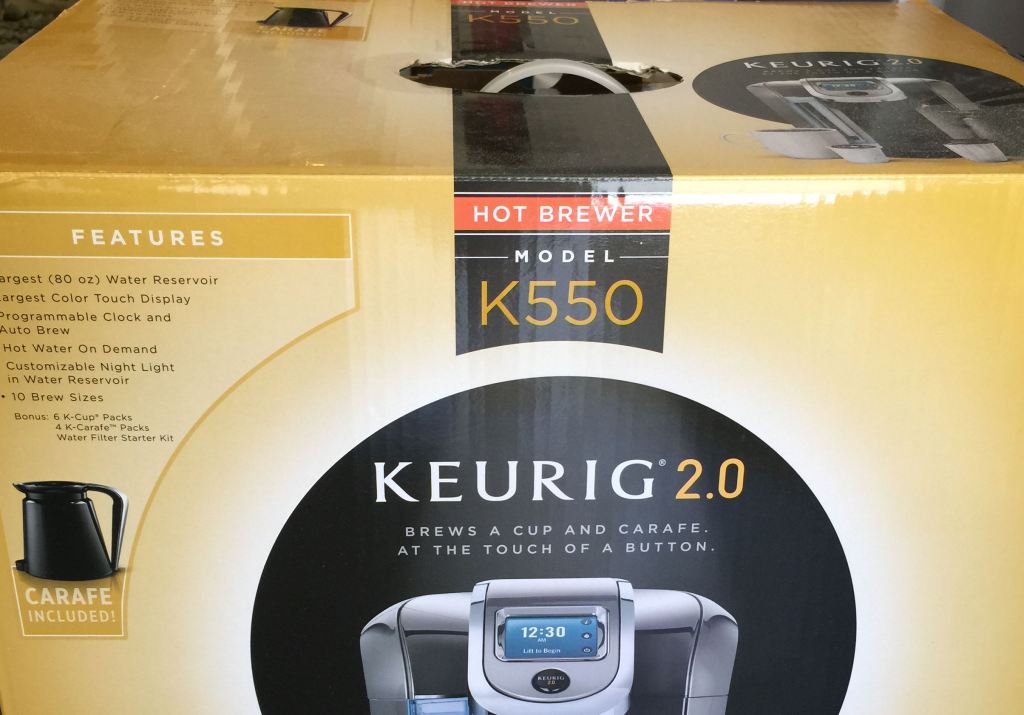
Part of the enjoyment of the coffee experience starts before the first sip. The aroma awakens the senses in expectation of the satisfaction anticipated. And to quote a famous rock lyric, “I can’t get no satisfaction.”
I’ve tried to be modern. Both iCoffee and Keurig have sent Monsters and Critics their latest models for review. Both were impressive, shiny…and problematic, as the iCoffee brewed consistently different amounts of coffee into my cup, all weak, and then the Keurig followed suit, with equally anemic java output, despite me using the lowest ounce selection on the dial.

These gizmos each had some serious girth, and the real estate on my kitchen counter is a scarcity. After spending over $20 bucks on Donut Shop coffee, I called ‘uncle’ and packed them up, giving the pods to a food bank. Now, in the garage these massive machines sit. I cannot be enticed to pop for a Nespresso machine – with even their smaller pods – despite everyone saying their the best of the single serve lot.
I’m done.
The insanity of coffee pod sales in the world has been a phenomenon like we haven’t seen in a beverage category that was pretty straight forward – save for the fancy espresso machines of restaurants – for a long time.

Drip coffee works, as does the screw-able old fashioned Italian/Cuban coffeemaker, and even the slow process of cold java, the crazy “Weird Science” of coffee these days…a contraption that looks like it was hijacked from a college chemistry lab, drip, drip, dripping the dark nectar sans bitterness for the coffee-aholics. It tastes pretty rich and fabulous to boot. But where are you going to put the thing?
I’m not alone in my fatigue. Euromonitor International analysts say we still love coffee, but our passionate affair with pods is on the wane.
Now, thanks in great part to the mold police and those who have educated us about the importance of single source, free trade, small batch roasting and organic premium artisan coffee, the consumer is in the catbird seat. People are buying bulk roasted coffee from specialty shops or direct sales via Amazon.
It’s not just the aficionado who wants a stout and less bitter cup of Joe. Think body, not just the overly roasted dark brew Starbucks is famous for, and specific notes and palate nuances that coffees from Sumatra, Ethiopia and Colombia bring to the table.
These days, Joe Q.Public is holding the flavored creamer and has raised his bean IQ, and all concerned parties have taken notice.
Pods gained popularity because they were so convenient, but then after a while, Americans wanted flavor to trump expediency. The cost of a cup of coffee from a pod may be less than a Starbucks, but it is around seven times more expensive than fresh roasted bagged coffee.
Even the guy who helped create the Keurig is over it! John Sylvan told The Atlantic:
“I don’t have [a Keurig]. They’re kind of expensive to use. Plus it’s not like drip coffee is tough to make. It’s like a cigarette for coffee, a single-serve delivery mechanism for an addictive substance. [Given the environmental consequences] I feel bad sometimes that I ever [worked to make the Keurig]. No matter what they say about recycling, those things will never be recyclable.”
Everything old is new again, or “time to have a garage sale!”
As the older ways of making coffee come back in vogue, expect to see the pods become less ubiquitous in homes and hotels. For those of us who love coffee, this is great news. It spurs opportunities for premium organic and small batch coffee growers and local roasters to gain a foothold. Environmentalists and purists who adore coffee are all on the same page. Everyone just wants a fantastic, hot cuppa.

We spoke with newcomer artisan coffee maker, Dancing Moon Coffee, on what drives their passion for the business.
Two former “Mad Men,” ad executives and a businessman who wielded their craft on iconic brands like Pepsi and Black & Decker – Nick Pronovich, Gunar Skillins and Jamie Weldon – wanted to create something new they were passionate about and have fun doing it.
Gunar’s expertise as a former art director is why the packaging looks amazing. Jamie’s forty year romance with seeking out those who grow fine coffee and his track record in wide ranging business development melded well with his partners creative backgrounds, and together they have taken coffee, a truly simple idea, and perfected it to the most lofty of goals: Make primitive real coffee that challenges the emasculated brew most of us are drinking.
They felt that the hit and miss quality in mass market grinds forced their hand to come up with an exclusive, discerning product that people who appreciate the best would love. Gunar tells us, “Anything Nick is involved with is uncompromising, top-shelf. I knew when he contacted me for the project that the product was to be nothing less than the best available. I followed his vision and passion through design development of the brand with similar respect, a distinct character coupled with coffee’s inherent traditions, on a fresh stage. There’s an honesty with a smile, mirroring the product.”
Indeed, in a crowded field, Dancing Moon Coffee stands out as a premium brand that’s small batch, single source, strictly organic and fair trade, and using only the highest standards in roasting. Their Ethiopian Yirgacheffe single source coffee we tried is insanely delicious.
Jamie says, “Each of the four certified organic varieties focuses on a different coffee region of the world; a fifth variety is a gourmet blend. We wanted to work on something fun together, but also something that would take off…. That meant making something good and that would stand out in the clutter. We know that with other coffees, there’s no assurance that every bag will be as good as the last. Dancing Moon makes that guarantee.”
Nick adds, “Nothing beats a fresh brewed, delicious cup of coffee. It picks you up and gives you body for the day.”
Jamie adds, “These days in the coffee business there’s a lot of snare and delusion, and our Dancing Moon Coffee is the real deal… coffee found in Plato’s cave.”
Original Post – http://www.monstersandcritics.com/to-pod-or-not-to-pod/

